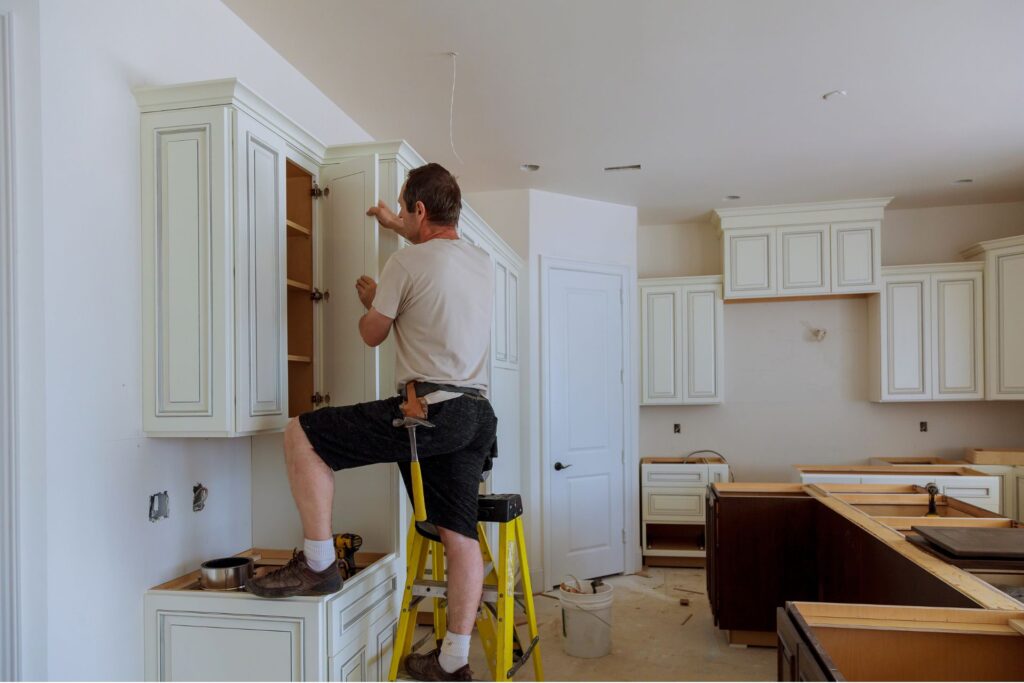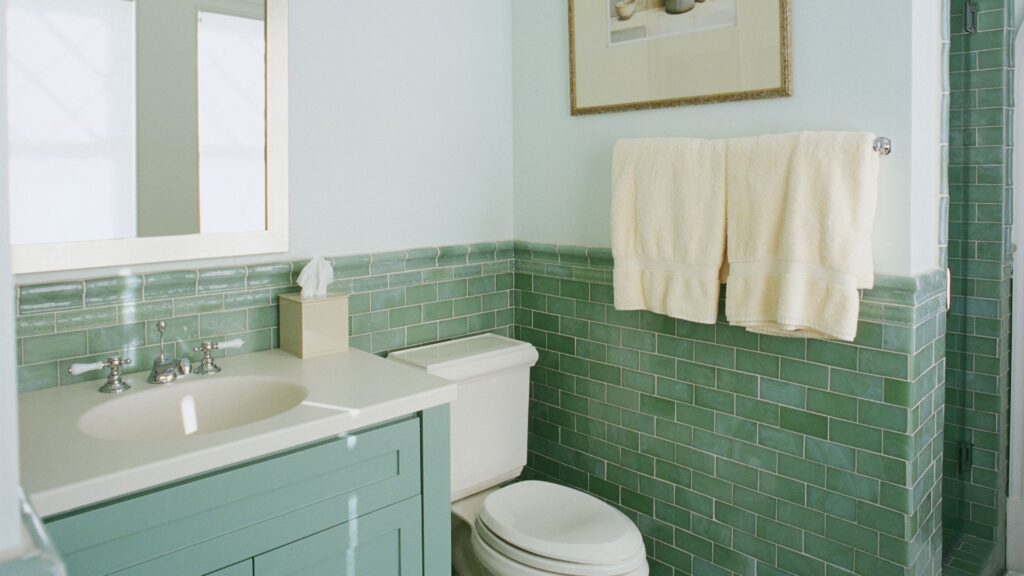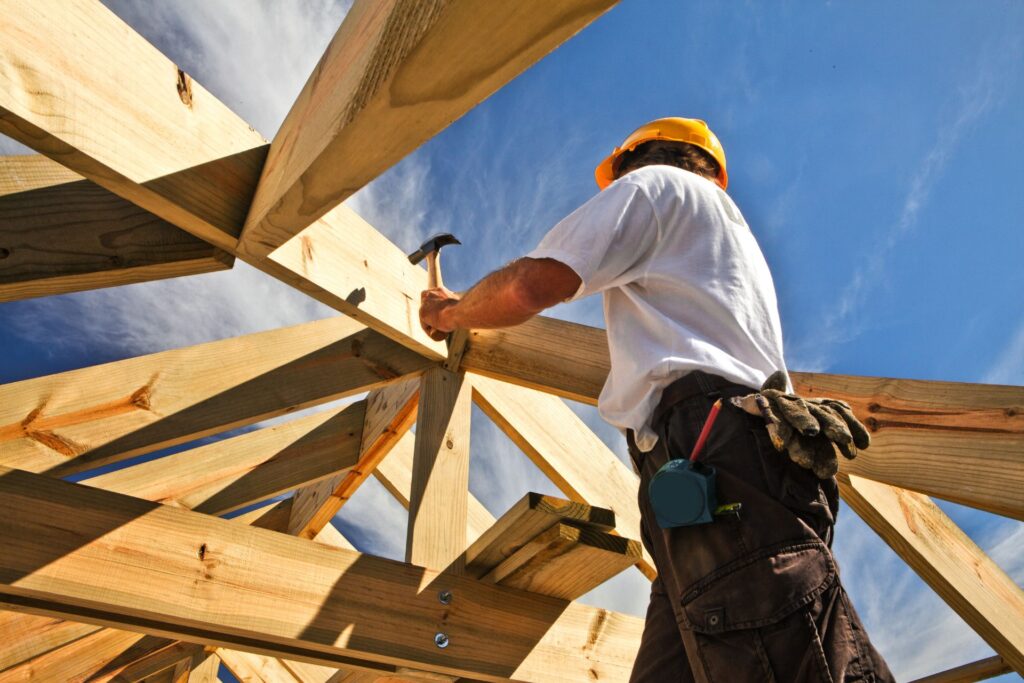Welcome to our comprehensive guide on how to save on a bathroom remodel in New Zealand! Remodeling your bathroom can be an exciting project, but it can also come with a hefty price tag if you’re not careful. Whether you’re looking to refresh your space with a few affordable updates or planning a more extensive renovation, this guide will provide you with practical tips and smart strategies to keep costs down while achieving the bathroom of your dreams. From setting a realistic budget and choosing cost-effective materials to making savvy design choices, we’ll cover everything you need to know to get the most value for your money. Let’s dive into how you can transform your bathroom without breaking the bank!
To save on a bathroom remodel in New Zealand, start by setting a realistic budget and prioritizing essential upgrades. Opt for affordable, durable materials like vinyl flooring and consider repurposing existing fixtures. DIY simple tasks where possible and hire local contractors for specialized work. Keep plumbing in place to avoid costly rerouting and explore financing options or government incentives to manage costs effectively.
- Assess Your Needs And Set A Budget
- Plan And Design Your Remodel Efficiently
- Choose Affordable And Durable Materials
- Save On Labor Costs
- Optimize Plumbing And Electrical Work
- Focus On Cost-Effective Upgrades
- Consider Financing And Incentives
- Manage The Project Effectively
- Post-Remodel Tips For Long-Term Savings
- FAQs: About How To Save On Bathroom Remodel NZ
- What is the average cost of a bathroom remodel in New Zealand?
- How can I create a budget for my bathroom remodel?
- What are the most cost-effective materials for a bathroom remodel?
- Is it cheaper to do a bathroom remodel yourself or hire a professional?
- What are some ways to save on labor costs during a bathroom remodel?
- How can I save on plumbing and electrical work during my bathroom remodel?
- Are there any government incentives or rebates for bathroom remodeling in New Zealand?
- What are the best ways to maximize space in a small bathroom remodel?
- How can I make my bathroom remodel more eco-friendly on a budget?
- How long does a bathroom remodel typically take?
- Conclusion
Assess Your Needs And Set A Budget
Renovating a bathroom is an exciting project that can greatly enhance the comfort and value of your home. However, it requires careful planning to ensure the outcome meets your expectations without breaking the bank. Here’s a comprehensive guide on how to assess your needs and set a realistic budget for your bathroom renovation.
Evaluate the Current Bathroom Layout
The first step in planning a bathroom renovation is to evaluate the existing layout. Take a good look at your bathroom and identify what works and what doesn’t. Do you have enough storage space? Is the shower or bathtub in a convenient location? Are the sink and vanity positioned for optimal use? Understanding the strengths and weaknesses of your current layout will help you decide what needs to change and what can stay. For instance, if your bathroom layout works well but looks outdated, a simple facelift with new tiles or fixtures might suffice. On the other hand, if the space feels cramped or awkward, you might need to consider a more extensive remodel that involves moving walls or plumbing.
Prioritize Upgrades
Once you have a clear understanding of your bathroom’s current layout, it’s time to prioritize upgrades. Focus on the essential updates that provide the most value and improve the overall functionality of the space. Start by listing the must-have features—such as a new shower, better lighting, or additional storage—before moving on to the nice-to-have items, like a heated floor or a double vanity. Think about how each upgrade will impact your daily routine and which ones will offer the greatest return on investment. For example, replacing old, inefficient fixtures with water-saving models can reduce utility bills and is often a high-value upgrade. By prioritizing the most important updates, you can ensure your renovation project stays focused and on budget.
Establish a Realistic Budget
Setting a realistic budget is crucial to avoid financial strain and ensure a smooth renovation process. Start by considering your financial situation and determining how much you are willing to spend on the project. It’s essential to have a clear understanding of your needs and expectations before setting your budget. Research the average cost of bathroom renovations in your area to get a ballpark figure. Keep in mind that the costs can vary widely depending on the scope of the project, the materials chosen, and labor costs. Break down your budget into different categories, such as plumbing, electrical work, tiling, and fixtures, to see where your money will be going. This will also help you identify areas where you can save by choosing more affordable options without compromising on quality.
Incorporate a Contingency Fund
No matter how well you plan, unexpected expenses are almost inevitable in any renovation project. That’s why it’s wise to incorporate a contingency fund into your budget. A good rule of thumb is to set aside an extra 10-15% of your total budget to cover unforeseen costs, such as hidden water damage, outdated wiring, or plumbing issues that may arise once the renovation is underway. Having this buffer not only provides peace of mind but also ensures that your project can continue smoothly without financial hiccups. By being prepared for the unexpected, you can avoid the stress and frustration that often come with surprise expenses.
In conclusion, assessing your needs and setting a realistic budget are essential steps in the bathroom renovation process. By carefully evaluating your current layout, prioritizing upgrades, establishing a well-thought-out budget, and including a contingency fund, you can ensure a successful renovation that meets your needs and enhances the value of your home.
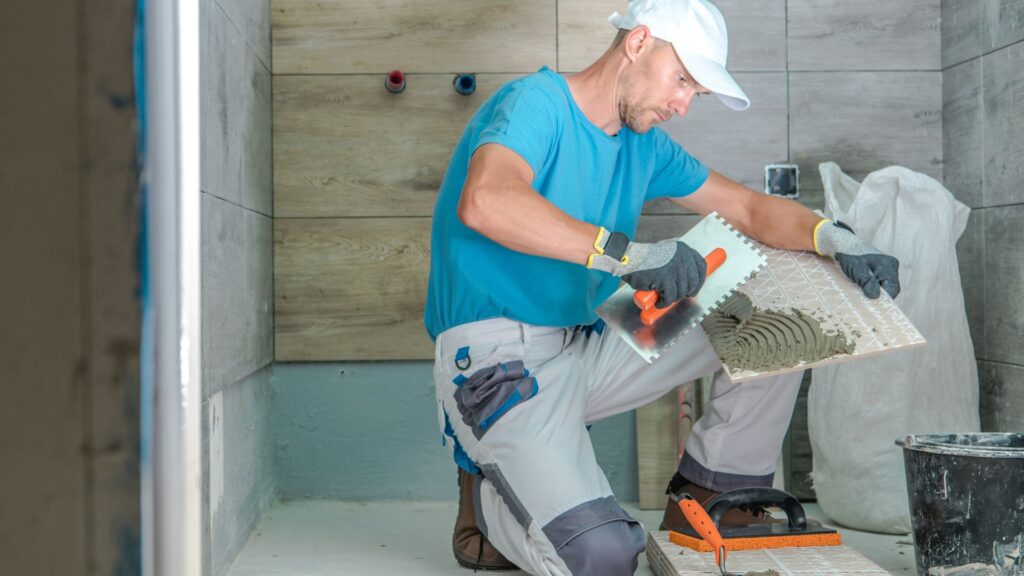
Plan And Design Your Remodel Efficiently
When embarking on a bathroom remodel, it’s crucial to plan and design your project efficiently to ensure you stay within budget and achieve your desired outcome. Here’s a comprehensive guide to help you navigate this process effectively:
Planning and designing a bathroom remodel can seem overwhelming, but with the right approach, it becomes manageable and even enjoyable. This section will guide you through the key considerations to help you make informed decisions that align with your vision and budget.
DIY vs. Hiring Professionals
One of the first decisions you’ll need to make is whether to take a DIY approach or hire professionals. This choice often depends on your skill level, the complexity of the project, and your budget.
- DIY Advantages: If you have a knack for hands-on projects and want to save money, tackling certain aspects of the remodel yourself might be a great option. Tasks such as painting, installing shelves, or even changing fixtures can be done with a bit of research and the right tools. Taking on these simpler projects yourself can significantly cut down costs, as labor often accounts for a large portion of remodeling expenses.
- When to Hire Professionals: However, for more complex tasks like plumbing, electrical work, or structural changes, it’s advisable to hire professionals. These jobs require specific skills and knowledge to ensure they’re done safely and correctly. Mistakes in these areas can lead to costly repairs down the line. Professionals bring expertise and can often complete the work more quickly and efficiently, saving you time and potential headaches.
By assessing your abilities honestly and understanding the scope of your remodel, you can decide where to save money with DIY efforts and where to invest in professional help.
Cost-Effective Design Tips
Designing a bathroom doesn’t have to break the bank. Thanks to modern technology, there are several cost-effective design tools and resources available to homeowners.
- Utilize Design Software: Many online design software tools offer user-friendly interfaces that allow you to experiment with different layouts, color schemes, and fixtures. These tools can help you visualize the end result without making any physical changes, reducing the risk of costly mistakes.
- Online Resources and Inspiration: Websites like Pinterest, Houzz, and even Instagram are fantastic for gathering ideas and inspiration. They offer a plethora of design ideas, many of which include budget-friendly tips and DIY hacks. Leveraging these resources can help you find creative solutions that align with your style without overspending.
By using these tools and resources, you can design a beautiful and functional bathroom without the hefty price tag.
Maximize Space
For those with smaller bathrooms, maximizing space is often a primary concern. Fortunately, there are several design techniques to make a small bathroom appear larger without knocking down walls or embarking on costly expansions.
- Use Light Colors and Reflective Surfaces: Light, neutral colors on walls and floors can make a space feel more open and airy. Incorporating mirrors and reflective surfaces can also give the illusion of a larger area by bouncing light around the room.
- Smart Storage Solutions: Consider installing shelves above the toilet, utilizing under-sink storage, or adding corner units. These solutions help declutter the space, making it feel more spacious and organized.
- Opt for Floating Fixtures: Wall-mounted sinks and toilets free up floor space, creating a sense of openness. Similarly, choosing a clear glass shower door over a curtain can make the room appear less enclosed and more expansive.
These techniques can significantly enhance the perceived size of your bathroom, making it more comfortable and functional without major renovations.
Simple Changes, Big Impact
Not all remodeling efforts require substantial changes or big budgets. Often, small, strategic updates can dramatically transform the look and feel of your bathroom.
- Update Fixtures and Hardware: Swapping out old faucets, showerheads, drawer pulls, and towel bars with modern alternatives can refresh the space instantly. These changes are relatively inexpensive and can be done quickly.
- A Fresh Coat of Paint: Never underestimate the power of paint. A new color can completely change the ambiance of a bathroom, making it feel fresh and new. Opt for moisture-resistant paint to ensure longevity.
- Add a Feature Wall or Accent Tile: Introducing a feature wall with bold paint or unique tile can add character without overwhelming the space. This small change can serve as a focal point, giving the room a designer touch.
- Enhance Lighting: Upgrading your bathroom lighting can also make a significant difference. Consider adding a combination of task, ambient, and accent lighting to enhance both functionality and aesthetics.
These small, impactful changes are budget-friendly and easy to implement, yet they offer a high return on investment by elevating the bathroom’s overall look and feel.
Remodeling your bathroom doesn’t have to be a daunting task. By carefully planning and making strategic decisions, you can transform your space efficiently and cost-effectively. Whether you decide to DIY certain aspects or bring in professionals for more complicated tasks, understanding your options will help you create a bathroom that meets your needs, fits your style, and stays within your budget. Remember, even small changes can make a big impact, so don’t underestimate the power of thoughtful design choices.
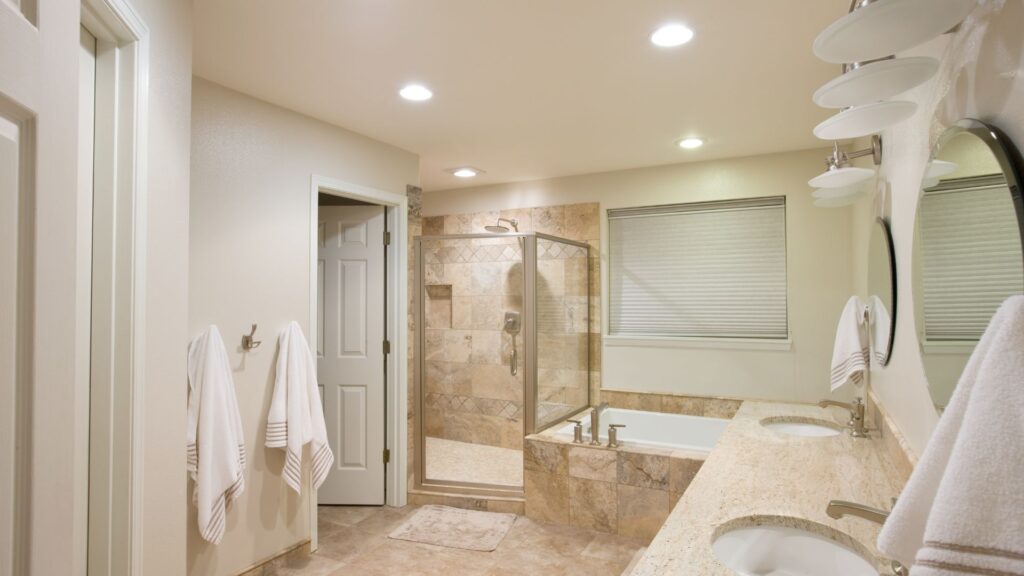
Choose Affordable And Durable Materials
When planning a renovation or construction project, one of the most crucial steps is selecting the right materials. This decision impacts not only the aesthetics of your space but also the budget and the durability of the finished product. In New Zealand, there are several strategies to ensure you are choosing materials that are both affordable and long-lasting. Let’s delve into some practical tips and insights to help you make the best choices.
Shop for Materials Smartly
Finding the right materials at the best prices requires a bit of research and savvy shopping. In New Zealand, there are numerous places where you can find affordable tiles, fixtures, and building materials without compromising on quality. Large home improvement stores like Bunnings Warehouse and Mitre 10 often offer competitive prices, especially if you keep an eye out for sales or clearance items. Don’t overlook local suppliers or specialty stores either; sometimes, they provide unique options at lower costs due to direct sourcing.
Online marketplaces such as Trade Me can also be gold mines for finding materials at discounted rates. Here, you can connect directly with sellers offering excess inventory, discontinued items, or even lightly used fixtures that still have plenty of life left in them. Remember to check customer reviews and product ratings to ensure the quality of the materials you’re considering.
Consider Alternatives
When it comes to selecting materials, durability and affordability should go hand in hand. While natural stone countertops or solid hardwood flooring may be beautiful, they often come with a hefty price tag. Instead, consider more affordable yet durable alternatives. For instance, vinyl flooring has come a long way in terms of design and resilience; it now mimics the look of hardwood or tile closely but at a fraction of the cost. Similarly, laminate countertops can provide the appearance of stone or wood while being more resistant to stains and scratches, making them a smart choice for kitchens and bathrooms.
These alternatives are not only budget-friendly but also offer practical benefits such as easier maintenance and longer life spans. Choosing such materials allows you to allocate your budget more effectively, perhaps splurging on a statement piece or a high-traffic area where more expensive materials will be most appreciated.
Repurpose and Reuse
An often overlooked strategy for saving money on materials is to repurpose and reuse existing ones. This approach not only cuts costs but also adds a unique, personalized touch to your project. If you’re renovating, consider what materials or fixtures can be salvaged. Wooden beams, bricks, tiles, or even old cabinetry can be refurbished and used in new and creative ways. For example, old timber can be sanded down and treated to become beautiful shelving or a feature wall.
You can also look for second-hand deals. Websites like Facebook Marketplace or local community boards often feature listings for used materials at significantly lower prices. These materials are often in good condition and can be perfect for your project. Another option is visiting salvage yards or recycling centers where you can find everything from doors to windows and even larger structural elements, all for a fraction of the cost of new materials.
Environmentally Friendly Choices
Opting for sustainable materials is not only beneficial for the environment but can also be cost-effective in the long run. Materials such as bamboo, recycled glass, and reclaimed wood are excellent choices that offer both durability and a reduced carbon footprint. These materials are often more affordable than their non-sustainable counterparts and come with the added benefit of contributing to a greener planet.
Moreover, sustainable materials often have unique qualities that set them apart aesthetically. For instance, recycled glass countertops can provide a striking, modern look, while reclaimed wood brings warmth and character to any space. Many homeowners are now opting for low-VOC (volatile organic compounds) paints and finishes, which are not only safer for your health but also come in a range of colors and finishes to suit any design palette.
In conclusion, choosing affordable and durable materials requires a balanced approach that considers both cost and quality. By shopping smartly, considering alternative materials, repurposing and reusing, and selecting environmentally friendly options, you can create a beautiful, lasting space that aligns with both your budget and your values. Remember, the key to a successful project lies in the thoughtful selection of materials that will stand the test of time while also respecting your financial constraints.

Save On Labor Costs
When it comes to home renovation or improvement projects, labor costs can quickly add up and take a significant chunk out of your budget. However, there are several strategies you can employ to keep these costs down without sacrificing quality. Let’s dive into some practical tips for saving on labor expenses, whether you’re a DIY enthusiast or looking to hire professionals.
DIY Where Possible
One of the most effective ways to save on labor costs is by taking on certain tasks yourself. Not every home improvement project requires a professional; there are many tasks that a homeowner with a bit of time and the right tools can tackle. Here are a few common tasks suitable for DIY:
- Painting: Whether you’re refreshing the color of a single room or giving your entire house a new look, painting is a manageable DIY task. All you need are the right supplies, some patience, and a bit of practice. Plus, there are countless tutorials available online to guide you through the process.
- Minor Plumbing: Simple plumbing tasks, such as fixing a leaky faucet, unclogging a drain, or replacing a showerhead, can often be done without the need for a professional plumber. With the right tools and some basic instructions, these minor repairs can be both satisfying and cost-effective.
- Installing Fixtures: Upgrading or installing new fixtures, like light fittings, cabinet hardware, or bathroom accessories, is usually straightforward. Most of these tasks only require basic hand tools and can significantly enhance the aesthetic appeal of your home.
By handling these tasks yourself, you not only save money on labor but also gain valuable skills and a sense of accomplishment.
Hire Local and Efficient Contractors
For more complex jobs that require professional expertise, hiring local contractors can be a cost-effective option. Here are some tips for finding reliable and affordable contractors in New Zealand:
- Research and Referrals: Start by asking friends, family, and neighbors for recommendations. Word of mouth is often the best way to find trustworthy contractors. Additionally, check online reviews and ratings on platforms like Builderscrack, NoCowboys, or Trade Me Services to get a sense of a contractor’s reputation.
- Check Credentials and Experience: Ensure the contractors you’re considering are properly licensed and insured. Look for professionals who specialize in the type of work you need and have a proven track record in the industry.
- Look for Efficiency: A good contractor should provide a clear timeline for the project and stick to it. Efficient contractors who finish projects on time and within budget can save you from costly delays.
Hiring local contractors also helps you support your community and can sometimes lead to more competitive pricing due to reduced travel costs and better familiarity with local building codes and conditions.
Get Multiple Quotes
Obtaining multiple quotes is a crucial step in the process of hiring a contractor. Here’s why:
- Compare Costs: Different contractors may offer different pricing for the same job, so getting at least three quotes can help you understand the average cost of your project.
- Assess Value, Not Just Price: While it’s tempting to go with the lowest quote, consider what each contractor is offering. Are materials included in the price? How much experience do they have? Is there a warranty for their work? Sometimes, a slightly higher quote might offer better value in the long run.
- Leverage Quotes for Negotiation: Having multiple quotes can also give you leverage when negotiating with contractors. If you prefer one contractor but they are a bit more expensive, you can discuss the quotes you’ve received and see if they’re willing to match or come close to the lower prices.
Negotiate Labor Rates
Negotiation is an essential part of hiring a contractor and can lead to significant savings on labor costs. Here are some strategies for effective negotiation:
- Be Transparent About Your Budget: Let the contractor know upfront what your budget is. This can help them propose cost-effective solutions or suggest alternatives that align with your financial constraints.
- Discuss Payment Terms: Some contractors might offer a discount for cash payments or for flexible payment terms. Discussing these options could lead to a reduced overall cost.
- Bundle Services: If you have multiple projects or tasks that need to be done, consider bundling them together. Contractors might offer a discount for a larger job or multiple projects, as it can be more cost-effective for them as well.
- Maintain Open Communication: Clear and open communication throughout the project ensures there are no misunderstandings or unexpected costs. Regular check-ins can help manage expectations and keep the project within budget.
By taking a proactive approach to managing labor costs, from DIY where possible to negotiating effectively with contractors, you can keep your home improvement project on track and within budget. Remember, the goal is to achieve a balance between cost savings and quality workmanship, ensuring your home looks great and functions well without breaking the bank.
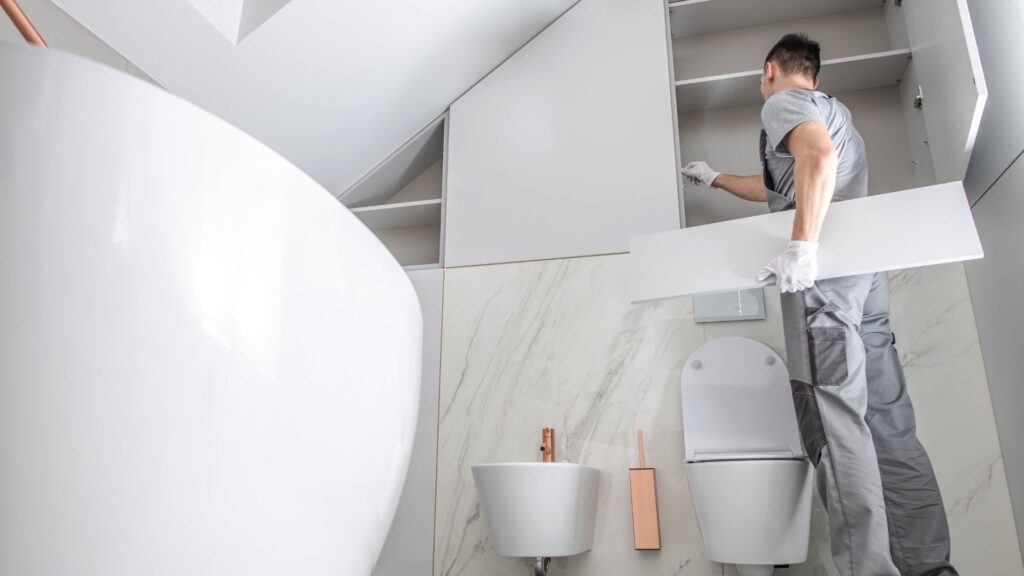
Optimize Plumbing And Electrical Work
When remodeling a bathroom, optimizing plumbing and electrical work is crucial to maintaining budget and ensuring safety and functionality. This section covers the importance of keeping plumbing in place, planning electrical work efficiently, and hiring licensed professionals for critical tasks.
Keep Plumbing in Place
One of the smartest decisions you can make during a bathroom renovation is to keep the existing plumbing layout as intact as possible. There are several benefits to this approach. First and foremost, keeping the plumbing in its current location can significantly reduce costs. Rerouting pipes for sinks, toilets, and showers can become an expensive endeavor, often requiring more labor, materials, and time. This expense arises not only from the plumbing work itself but also from the additional repairs needed to patch up walls, floors, and ceilings affected by moving pipes.
Additionally, preserving the existing plumbing layout minimizes the risk of unexpected problems. When pipes are moved, there is always a chance of encountering unforeseen issues like leaks, structural damage, or outdated piping that requires replacement. By keeping the plumbing in place, you can avoid these potential setbacks, keeping your project on schedule and within budget.
Efficient Electrical Planning
Just like plumbing, electrical work is a critical component of a bathroom remodel that requires careful consideration and planning. Efficient electrical planning involves assessing the current electrical setup and determining whether it meets the needs of your new bathroom design. Before starting any electrical work, it is vital to evaluate the placement of outlets, switches, and light fixtures. This ensures that the electrical system is both functional and adheres to safety standards.
Avoiding unnecessary rewiring is a key aspect of efficient electrical planning. Rewiring can be costly and time-consuming, often involving cutting into walls and ceilings, which can lead to additional repair costs. Instead, focus on upgrading fixtures and adding new outlets only where absolutely necessary. For instance, if your existing electrical layout already supports adequate lighting and electrical outlets for your bathroom’s needs, consider leaving it as is or making minimal adjustments to optimize the space.
By minimizing rewiring, you reduce labor costs and the potential for electrical issues down the line. Plus, you’ll avoid having to navigate the complex web of local electrical codes, which can vary widely and require compliance with specific regulations.
Hire Licensed Professionals for Critical Work
When it comes to plumbing and electrical work, hiring licensed professionals is not just a recommendation; it’s a necessity. The importance of using licensed electricians and plumbers cannot be overstated, as these trades involve a high level of skill, precision, and knowledge of safety codes and regulations.
Licensed professionals are trained to handle complex tasks that involve electrical wiring and plumbing systems. They ensure that all work is performed according to local building codes, which is crucial for the safety of your home and its occupants. Improperly installed electrical wiring can pose a significant fire risk, while poorly executed plumbing can lead to leaks, water damage, or even flooding. By hiring a licensed electrician or plumber, you are safeguarding your home against these risks and ensuring that the work will pass any necessary inspections.
Furthermore, many homeowners’ insurance policies require that plumbing and electrical work be completed by licensed professionals. Failing to comply with this requirement could result in your insurance company denying claims related to improperly installed systems, leading to costly out-of-pocket expenses in the event of damage.
In conclusion, optimizing plumbing and electrical work during a bathroom remodel involves a careful balance of maintaining existing systems, planning efficiently, and hiring qualified professionals. By keeping plumbing in place, planning electrical work strategically, and using licensed professionals, you can ensure a smooth, cost-effective renovation that meets both your aesthetic and functional needs while adhering to all safety regulations.

Focus On Cost-Effective Upgrades
When planning a home renovation or improvement project, one of the most crucial aspects to consider is the budget. It’s essential to focus on cost-effective upgrades that provide long-term value and enhance your living space without breaking the bank. Here’s a deep dive into some smart, affordable upgrades you can make to your home to save money over time and improve your home’s overall appeal.
Cost-effective upgrades are all about making strategic changes that provide the most bang for your buck. Let’s explore a few practical options:
Install Water-Saving Fixtures
One of the simplest and most effective ways to save money in the long run is by installing water-saving fixtures. By switching to low-flow toilets, faucets, and showerheads, you can significantly reduce your water usage. These fixtures are designed to maintain water pressure while using less water, which leads to substantial savings on your water bills. Over time, this investment can pay for itself, and it’s a great way to make your home more environmentally friendly. Low-flow fixtures not only conserve water but also help reduce the strain on your local water supply, contributing to a more sustainable community.
Energy-Efficient Lighting
Lighting is another area where homeowners can make cost-effective upgrades. By opting for energy-efficient LED lighting, you can reduce your energy costs and enjoy a longer-lasting light source. LEDs use a fraction of the electricity that traditional incandescent bulbs consume, and they have a much longer lifespan. This means fewer bulb replacements and lower utility bills. Additionally, LED bulbs come in various styles and color temperatures, allowing you to choose the perfect lighting ambiance for your home. Whether you’re looking for bright, clear lighting for your kitchen or a warm, cozy glow for your living room, LED lights are a versatile and cost-effective choice.
Pre-Fabricated or Custom Cabinetry
When it comes to cabinetry, homeowners often face a choice between pre-fabricated cabinets and custom options. Pre-fabricated cabinets are usually more affordable and can be a great option if you’re on a tight budget. They are readily available and come in standard sizes, which can make installation quicker and easier. However, if you’re looking for something unique or have a specific vision for your space, affordable custom cabinetry might be the way to go. Custom cabinets allow you to choose the materials, finishes, and dimensions that best fit your needs and style. By working with a skilled carpenter or cabinetry professional, you can achieve a high-end look at a fraction of the cost of fully bespoke cabinetry.
Simple Cosmetic Updates
Sometimes, a few simple cosmetic updates can have a big impact without the need for a full-scale renovation. Consider re-grouting tiles in your kitchen or bathroom to refresh their appearance and prevent water damage. Resealing countertops can protect them from stains and scratches, prolonging their life and maintaining their look. Repainting walls or cabinetry can instantly update the look of a room, making it feel fresh and new. These small changes can drastically improve your home’s aesthetics with minimal expense and effort. Moreover, these updates are perfect for DIY enthusiasts who want to save money by doing the work themselves.
By focusing on cost-effective upgrades like water-saving fixtures, energy-efficient lighting, strategic cabinetry choices, and simple cosmetic updates, you can enhance the value and appeal of your home without overspending. These improvements not only make your home more comfortable and attractive but also provide long-term savings, making them a smart investment for any homeowner. Whether you’re planning a full renovation or just looking to make a few changes, these tips will help you achieve a beautiful, functional home that doesn’t break the bank.
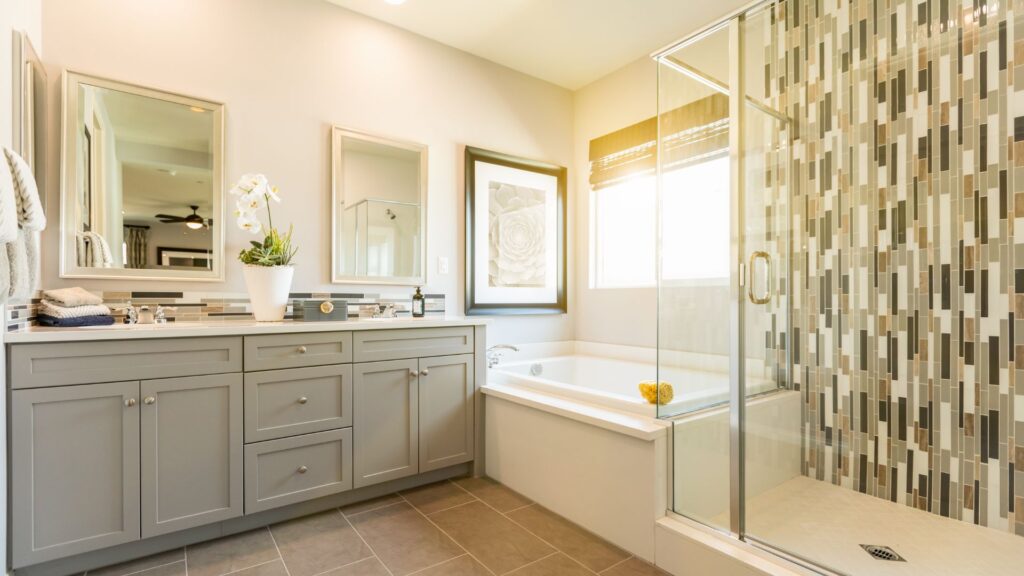
Consider Financing And Incentives
When planning an eco-friendly home renovation, it’s essential to carefully consider how you’ll finance the project. Taking the time to explore various financing options and incentives can help you manage costs effectively while also taking advantage of potential savings. This section dives into several key considerations for financing an eco-friendly renovation, focusing on the importance of exploring different financing avenues, understanding government rebates and incentives, and leveraging home equity.
Explore Financing Options
The first step in financing your eco-friendly home renovation is to explore all available options. Different financing avenues can offer varying benefits, so it’s important to choose one that aligns with your financial situation and renovation goals.
- Low-Interest Loans: Many financial institutions offer low-interest loans specifically designed for home renovations. These loans can provide the funds needed to undertake a comprehensive eco-friendly remodel without requiring a large upfront payment. It’s crucial to shop around and compare interest rates and terms to find the best deal.
- Personal Savings: If you have sufficient savings, using them to finance your renovation could be a smart move. Paying for the project outright can save you from paying interest on a loan, ultimately reducing the total cost of your renovation. However, it’s important to ensure that dipping into your savings won’t leave you financially vulnerable in case of unexpected expenses or emergencies.
- Other Financing Avenues: Beyond traditional loans and savings, there are other financing options to consider. These may include credit lines, peer-to-peer lending platforms, or even borrowing from friends or family. Each option comes with its own set of advantages and potential risks, so it’s crucial to assess your comfort level with each and choose accordingly.
Government Rebates and Incentives
New Zealand offers several government programs aimed at encouraging eco-friendly home renovations. These programs often provide financial incentives in the form of rebates, tax credits, or grants, which can significantly reduce the cost of your renovation project.
- Rebates for Eco-Friendly Renovations: One of the most straightforward ways to save money on your renovation is to take advantage of available rebates. These rebates are often offered for specific types of eco-friendly upgrades, such as energy-efficient windows, insulation, or solar panel installations. Research the current rebates available in your area, as these can change frequently and may require pre-approval before you start your project.
- Tax Credits: In addition to rebates, you might be eligible for tax credits when you invest in certain eco-friendly home improvements. These credits can help reduce the amount of tax you owe, providing another layer of savings on top of rebates and other incentives.
- Local and Regional Programs: Besides national programs, local governments and regional councils may also offer additional incentives to encourage sustainable renovations. These could include grants for specific projects, low-interest loans, or partnerships with local suppliers that offer discounted rates on eco-friendly materials and services.
Leverage Home Equity
For many homeowners, leveraging home equity can be an effective way to finance a renovation. However, it’s crucial to understand both the benefits and potential drawbacks of this approach before deciding if it’s the right option for you.
- Understanding Home Equity: Home equity is the difference between your home’s current market value and the amount you still owe on your mortgage. As you pay down your mortgage or as your property’s value increases, your equity grows. This equity can be used as collateral for a loan or line of credit, which can then be used to finance your renovation.
- Pros of Using Home Equity: One of the main advantages of using home equity is that it often allows you to borrow at a lower interest rate than other types of loans. Additionally, interest payments on a home equity loan may be tax-deductible, depending on your location and financial situation. This can make it a cost-effective financing option for large-scale renovations.
- Cons of Using Home Equity: On the flip side, using home equity does carry certain risks. Most notably, if you’re unable to repay the loan, you could risk losing your home. It’s also important to remember that using equity reduces the amount of ownership you have in your home, which could impact your financial security in the long run. As with any major financial decision, it’s crucial to weigh these factors carefully and consult with a financial advisor if necessary.
Carefully considering your financing options and taking advantage of available incentives can significantly impact the overall cost and feasibility of your eco-friendly home renovation. By exploring low-interest loans, using personal savings wisely, leveraging available government rebates, and understanding the ins and outs of home equity, you can make informed decisions that align with your financial goals and sustainability aspirations. Remember, every renovation project is unique, so it’s essential to tailor your financing strategy to your specific needs and circumstances.
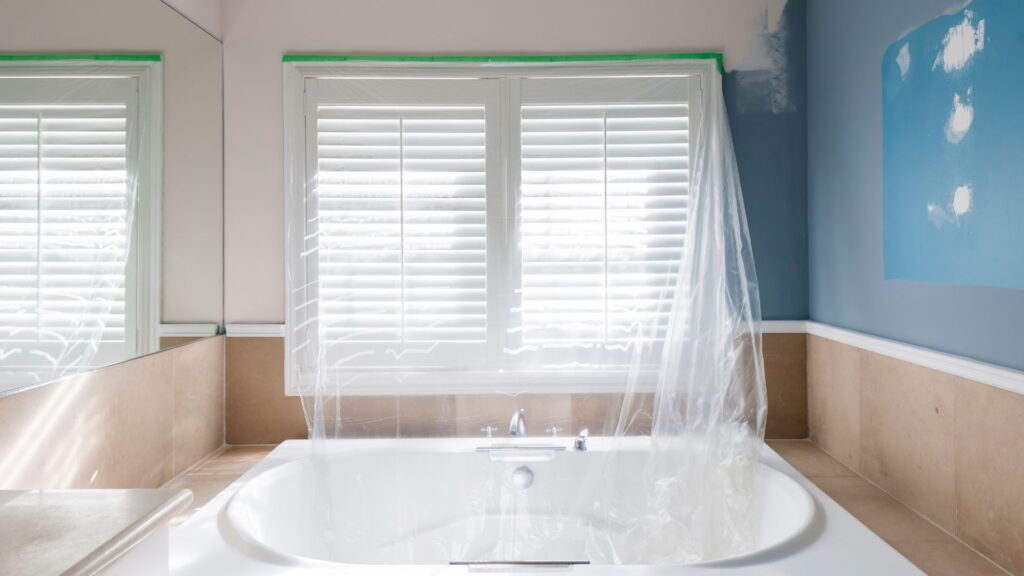
Manage The Project Effectively
Managing a construction or renovation project effectively requires a strategic approach to ensure that everything runs smoothly, on time, and within budget. Here’s a detailed breakdown of key steps to manage your project effectively:
Create a Detailed Timeline
One of the most critical steps in managing a project is creating a detailed and realistic timeline. A well-structured timeline acts as a roadmap for the project, guiding each phase from start to finish. Here’s how to draft an effective timeline:
1. Break Down the Project into Phases: Start by dividing the project into distinct phases, such as planning, design, construction, and finishing. Each phase should have its own set of tasks that need to be completed sequentially.
2. Estimate Time for Each Task: For each task within a phase, estimate the time required for completion. Be realistic—consider factors like the complexity of the task, availability of materials, and potential delays.
3. Identify Dependencies: Recognize tasks that are dependent on the completion of others. For instance, you can’t start painting until the walls are fully built and prepped. Understanding these dependencies helps prevent bottlenecks in the schedule.
4. Build in Buffer Time: It’s essential to incorporate buffer time for unforeseen delays, such as weather conditions, supply chain disruptions, or unexpected complications. This will help avoid extending the overall timeline and incurring additional costs.
5. Communicate the Timeline Clearly: Share the timeline with all stakeholders, including contractors, suppliers, and team members. Make sure everyone understands the schedule and their roles in meeting deadlines.
By creating a comprehensive timeline, you can avoid delays, manage resources more efficiently, and prevent unexpected costs from escalating the project’s budget.
Monitor Progress Closely
Once your project is underway, it’s vital to monitor progress closely to ensure it remains on track and within budget. Regular monitoring involves several practices:
1. Schedule Regular Check-Ins: Set up frequent meetings with contractors and team members to review the progress. These check-ins provide an opportunity to discuss what has been accomplished, what is currently being worked on, and what potential issues could arise.
2. Track Costs and Expenditures: Keep a detailed record of all costs associated with the project. This includes materials, labor, and any additional expenses that occur. Regularly compare these costs against the budget to identify any discrepancies early.
3. Use Project Management Tools: Utilize digital tools and software designed for project management. These tools help track timelines, assign tasks, monitor progress, and manage budgets effectively. They provide a centralized platform where all project data is easily accessible to stakeholders.
4. Address Issues Immediately: If any issues or delays arise, address them immediately. Procrastinating on resolving problems can lead to more significant setbacks and increased costs. Quick action helps keep the project moving forward smoothly.
5. Maintain Open Communication: Ensure open lines of communication with all parties involved. Encourage contractors and team members to report any concerns or obstacles they encounter. This proactive approach helps to mitigate risks and keep the project on track.
By closely monitoring progress and maintaining transparency, you can ensure that the project remains aligned with your goals and budget, avoiding costly overruns and delays.
Handle Permits and Regulations
Navigating the complexities of permits and regulations is crucial for any construction or renovation project, especially in New Zealand, where local building regulations can be stringent. Here’s how to handle permits and regulations effectively:
1. Understand Local Building Regulations: Familiarize yourself with the local building codes and regulations in your area. Each region may have specific requirements, and understanding these upfront can help you avoid legal issues down the line.
2. Identify Necessary Permits: Determine which permits are required for your project. This could include building permits, electrical permits, plumbing permits, and any other specialized permits related to your project’s scope. Not having the right permits can lead to work stoppages and fines.
3. Engage with Local Authorities Early: Start the permit application process early by contacting local building authorities. Early engagement can help you understand the requirements, expected timelines for approvals, and any fees associated with obtaining permits.
4. Prepare Comprehensive Documentation: When applying for permits, provide detailed plans and documentation that clearly outline the scope of the project. This should include architectural drawings, structural plans, and any other relevant information. Thorough documentation can expedite the approval process.
5. Work with Experienced Professionals: Consider hiring professionals who are experienced in navigating local building regulations and permits. Architects, engineers, and project managers with local expertise can help ensure that all permits are obtained correctly and that the project complies with all regulations.
6. Stay Updated on Regulatory Changes: Regulations can change, so it’s crucial to stay informed about any updates or amendments that might affect your project. Regularly check with local authorities or professional organizations to stay compliant.
Handling permits and regulations meticulously not only ensures legal compliance but also helps maintain a smooth workflow throughout the project, preventing costly interruptions and delays.
Effective project management is the backbone of any successful construction or renovation endeavor. By creating a detailed timeline, monitoring progress closely, and handling permits and regulations correctly, you can ensure your project stays on track, within budget, and compliant with all legal requirements. Taking these steps not only enhances the efficiency of the project but also contributes to a stress-free and successful outcome.
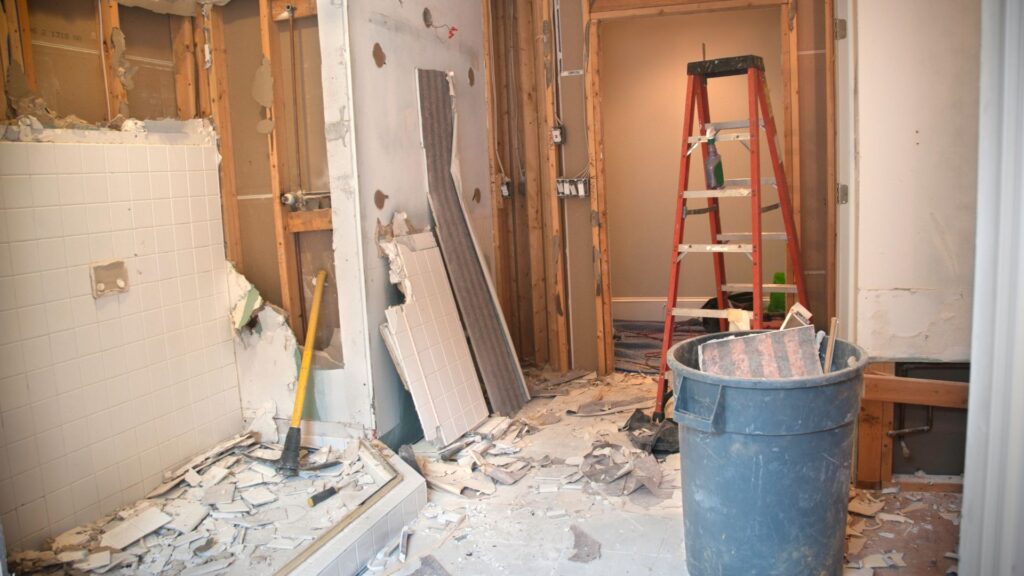
Post-Remodel Tips For Long-Term Savings
Remodeling your home is an exciting project that can increase the value of your property and improve your quality of life. However, the work doesn’t end when the contractors leave. To truly maximize the benefits of your investment, it’s essential to focus on long-term savings after the remodel is complete. Here are some practical post-remodel tips to help you save money and maintain the beauty and functionality of your new space for years to come.
Regular Maintenance
One of the most effective ways to ensure long-term savings after a remodel is through regular maintenance of your new installations. Whether it’s a kitchen upgrade, a bathroom overhaul, or a new deck, each element of your remodel requires proper care to extend its lifespan. For instance, kitchen countertops should be regularly cleaned and sealed to prevent stains and damage, especially if they’re made of materials like granite or marble. Similarly, hardwood floors benefit from periodic refinishing to maintain their luster and durability.
For appliances, follow the manufacturer’s guidelines for maintenance. This could include cleaning filters, checking for leaks, and scheduling professional inspections to ensure everything is functioning efficiently. Regular maintenance not only keeps your new installations looking great but also helps prevent costly repairs or replacements in the future. Remember, a small effort today can save a significant amount of money down the line.
Efficient Use of Space
Another critical aspect of post-remodel savings is making the most of your newly remodeled space. Efficient use of space isn’t just about aesthetics; it’s about maximizing functionality and preventing the need for future costly updates. Start by decluttering and organizing your space effectively. Invest in smart storage solutions that help keep your home tidy and free from unnecessary items that could lead to overcrowding or the need for additional remodeling work later.
Consider multifunctional furniture and built-in storage options to maximize every square inch of your space. For example, a bench with hidden storage can serve as both a seating area and a place to store seasonal items. In kitchens, use pull-out drawers and lazy Susans to make the most of corner cabinets and awkward spaces. By making efficient use of space, you’re reducing the likelihood of needing further modifications, saving you both time and money in the long run.
Stay Updated with Trends
Staying informed about the latest trends in home design and construction can also play a significant role in your long-term savings strategy. While trends in home design are constantly evolving, keeping an eye on what’s popular can help you plan for future updates more cost-effectively. For example, if you know that a particular type of countertop material is becoming more popular, you can start budgeting and planning for an update before the trend peaks and prices rise.
Additionally, being aware of trends can help you avoid costly mistakes. For instance, if a specific style is falling out of favor, you might decide to hold off on certain purchases or upgrades that could soon become outdated. Staying updated with trends allows you to make more informed decisions that align with both your budget and your long-term home improvement goals.
By focusing on regular maintenance, efficient use of space, and staying updated with trends, you can ensure that your remodel not only enhances your home’s aesthetic and functional appeal but also contributes to long-term savings. Taking these steps will help you avoid unnecessary expenses, maintain the value of your property, and enjoy the benefits of your remodel for many years to come. Remember, a well-maintained and thoughtfully organized home is a smart investment that pays off in both comfort and financial savings.
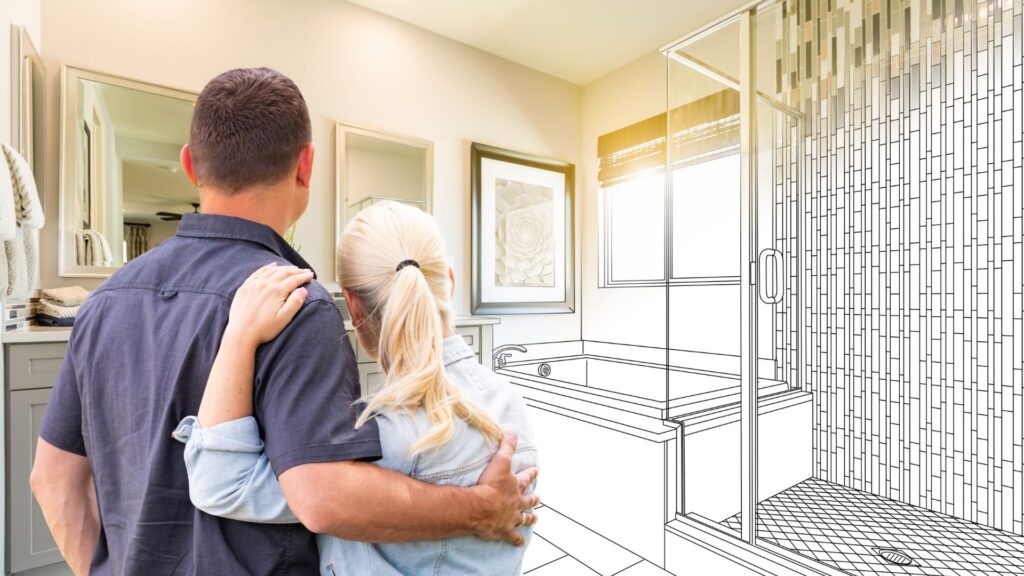
FAQs: About How To Save On Bathroom Remodel NZ
What is the average cost of a bathroom remodel in New Zealand?
The average cost of a bathroom remodel in New Zealand can vary widely depending on the scope of the project and the materials used. Generally, a basic remodel can cost between $10,000 to $20,000, while a more extensive renovation could range from $20,000 to $50,000 or more. Factors like the size of the bathroom, choice of materials, and the extent of plumbing or electrical work needed will significantly impact the total cost.
How can I create a budget for my bathroom remodel?
To create a budget for your bathroom remodel, start by listing all the necessary changes and upgrades you want to make. Prioritize these based on your needs and desires. Research the costs of materials, fixtures, and labor in New Zealand, and include a contingency fund of about 10-15% of the total budget for unexpected expenses. This approach helps you stay within your budget and avoid overspending.
What are the most cost-effective materials for a bathroom remodel?
Some of the most cost-effective materials for a bathroom remodel include vinyl flooring, laminate countertops, and ceramic or porcelain tiles. These materials are durable, affordable, and come in various styles to suit different design preferences. Additionally, consider repurposing or repainting existing fixtures and cabinets to save on costs.
Is it cheaper to do a bathroom remodel yourself or hire a professional?
It can be cheaper to do a bathroom remodel yourself if you have the necessary skills and experience, especially for simpler tasks like painting, tiling, or installing fixtures. However, for more complex tasks such as plumbing, electrical work, or major structural changes, hiring a professional is advisable to ensure safety, compliance with local regulations, and quality results. Balancing DIY work with professional help can help save costs while ensuring a successful remodel.
What are some ways to save on labor costs during a bathroom remodel?
To save on labor costs, consider handling simple tasks yourself, such as painting, installing accessories, or assembling flat-pack cabinetry. For more specialized work, get multiple quotes from local contractors to find competitive pricing. You can also negotiate rates and ask for itemized quotes to understand where you can cut costs without compromising quality.
How can I save on plumbing and electrical work during my bathroom remodel?
The most effective way to save on plumbing and electrical work is to keep the existing layout of your bathroom. Moving plumbing fixtures like sinks, toilets, and showers can significantly increase costs. Instead, work around the current setup and make necessary upgrades without altering the core plumbing or electrical systems. Hiring licensed professionals for essential work can also prevent costly mistakes and ensure compliance with safety standards.
Are there any government incentives or rebates for bathroom remodeling in New Zealand?
While there may not be specific incentives or rebates for bathroom remodeling, New Zealand homeowners can sometimes access grants or loans for home improvements that promote energy efficiency or accessibility. Check with local councils or government websites for any programs that might support eco-friendly upgrades, such as installing water-saving fixtures or energy-efficient lighting.
What are the best ways to maximize space in a small bathroom remodel?
To maximize space in a small bathroom, consider using light colors to make the room feel larger, installing floating vanities and shelves to free up floor space, and using mirrors to create an illusion of more space. Additionally, choose compact fixtures and furniture, such as a corner sink or a compact toilet, to make the most of the available area.
How can I make my bathroom remodel more eco-friendly on a budget?
To make your bathroom remodel more eco-friendly on a budget, consider using sustainable materials like bamboo or recycled tiles, installing water-saving fixtures such as low-flow toilets and faucets, and choosing LED lighting to reduce energy consumption. These choices are not only better for the environment but can also lead to long-term savings on utility bills.
How long does a bathroom remodel typically take?
The duration of a bathroom remodel can vary depending on the project scope, the availability of materials, and the complexity of the work. A basic remodel might take 2-3 weeks, while a more extensive renovation could take 4-6 weeks or longer. Planning and organizing the project efficiently, along with timely decision-making, can help minimize delays and keep the remodel on schedule.
Conclusion
In conclusion, saving on bathroom remodeling in New Zealand involves a combination of smart planning, informed decision-making, and a few savvy tips. Recapping the key strategies, it’s crucial to set a clear budget, prioritize essential updates, and consider cost-effective materials that do not compromise on quality. DIY elements can further reduce costs, but knowing when to hire a professional is equally important to avoid costly mistakes. By carefully planning each step of the remodeling process and staying flexible with choices, homeowners can achieve a stunning bathroom transformation without breaking the bank. We encourage you to share your own remodeling tips or experiences in the comments below—let’s learn from each other and make the journey of creating a beautiful, budget-friendly bathroom even more rewarding!
About the Author:
Mike Veail is a recognized digital marketing expert with over 6 years of experience in helping tradespeople and small businesses thrive online. A former quantity surveyor, Mike combines deep industry knowledge with hands-on expertise in SEO and Google Ads. His marketing strategies are tailored to the specific needs of the trades sector, helping businesses increase visibility and generate more leads through proven, ethical methods.
Mike has successfully partnered with numerous companies, establishing a track record of delivering measurable results. His work has been featured across various platforms that showcase his expertise in lead generation and online marketing for the trades sector.
Learn more about Mike's experience and services at https://theleadguy.online or follow him on social media:


